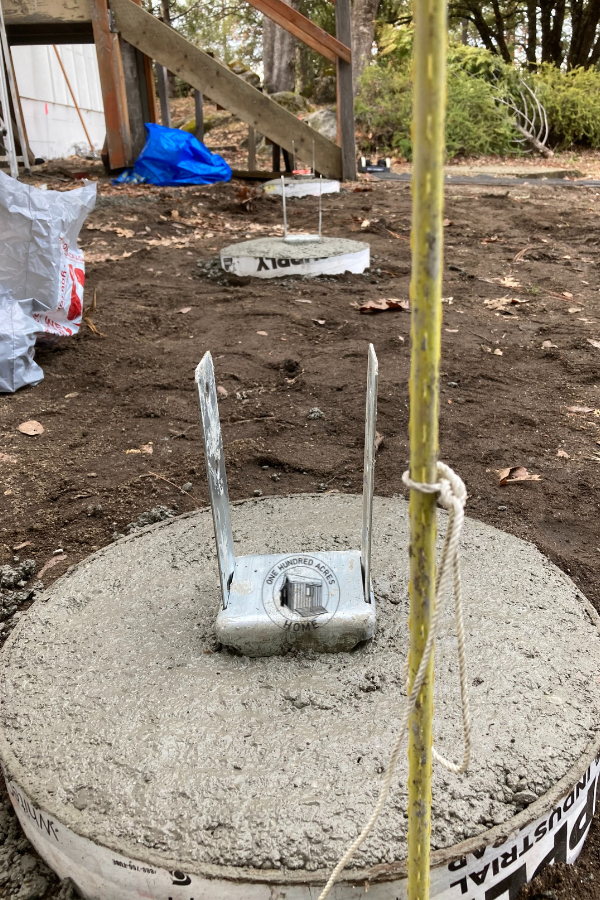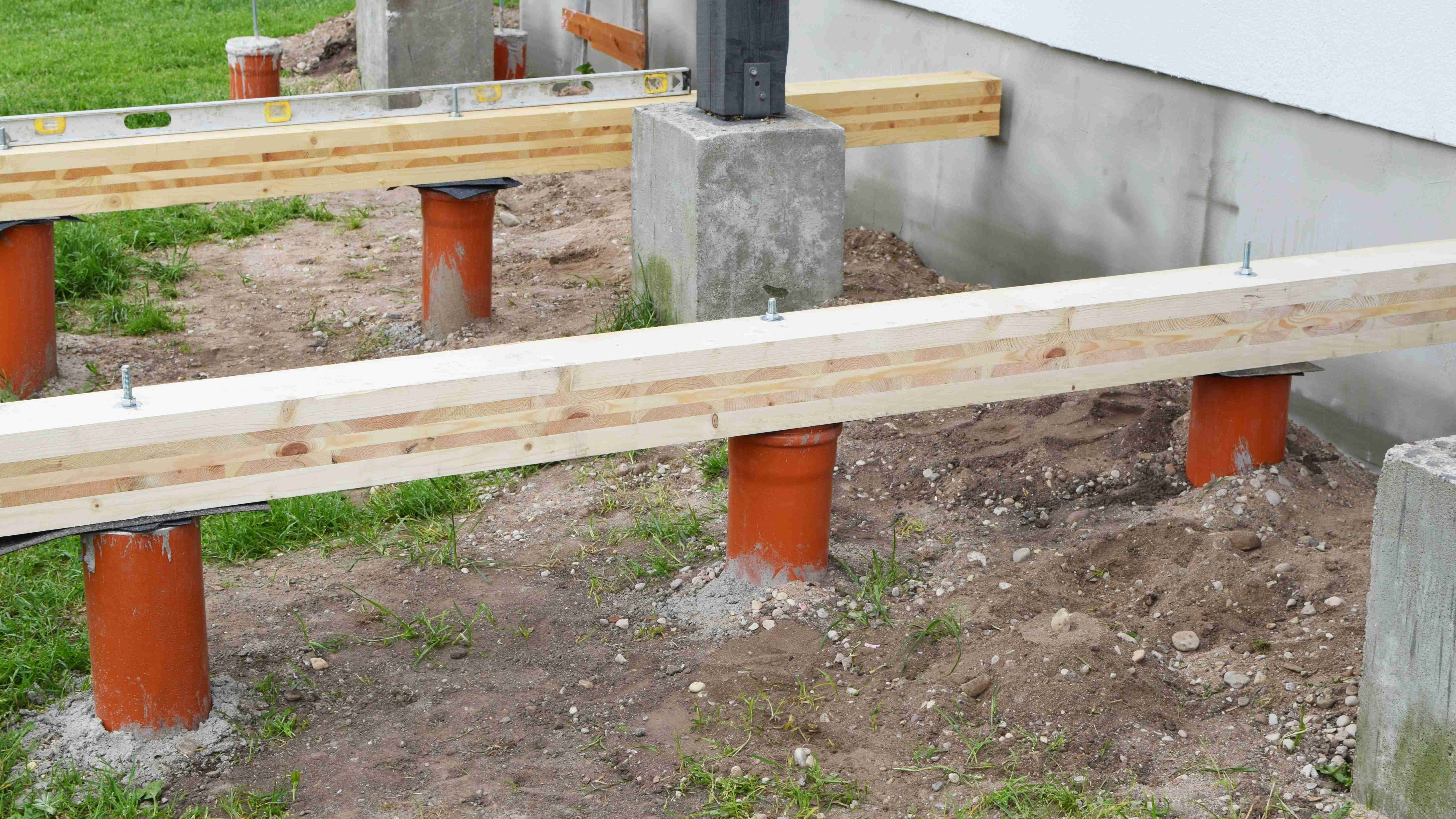Selecting the Right Deck Footings for Stability and Sturdiness
The long life and safety and security of your deck depend heavily on the type of footings you pick, as they give the important assistance and security to endure the test of time. In this conversation, we will certainly check out the different types of deck grounds, consider the essential elements to evaluate when making a decision, and dive right into the pros and cons of various alternatives.
Kinds of Deck Footings
There are several kinds of deck grounds that can be made use of, each offering unique advantages and factors to consider. One usual kind of footing is the concrete pier ground. These footings consist of a cylindrical hole loaded with concrete, which provides a strong structure for the deck messages. Concrete pier grounds are reasonably very easy to set up and provide excellent security, making them a popular choice for several deck jobs.
These footings are mounted by screwing them right into the ground, which develops a protected structure for the deck. They also allow for easy change and progressing of the deck if needed.
Conversely, some home builders go with precast concrete footings. These footings are constructed from long lasting concrete and be available in different forms and sizes to fit different deck designs. Precast concrete grounds are hassle-free to install and provide a secure base for the deck framework.
Ultimately, an additional alternative is the post-in-anchor footing system. This kind of footing involves driving a metal anchor into the ground and affixing it to the deck blog post. It provides versatility in terms of positioning the deck messages and appropriates for decks with light-weight structures.
When picking the ideal sort of deck ground, it is necessary to consider aspects such as soil conditions, deck tons, and regional building codes (Deck Footings). Consulting with a specialist specialist or structural designer can help make certain the ideal footing is selected for a safe and stable deck
Elements to Consider When Selecting Grounds
When selecting the suitable grounds for a deck, it is essential to carefully think about various variables such as soil problems, deck lots, and adherence to neighborhood building codes. These aspects play a substantial function in guaranteeing the stability and toughness of the deck structure.
Among the main factors to take into consideration is the soil conditions. The sort of soil on which the deck will be developed determines the type of grounds called for. Decks built on sandy or loose dirts may require much deeper footings to offer appropriate support and prevent settling. On the various other hand, decks improved clay or large dirts may need footings that can suit the soil's propensity to expand and contract.
One more essential aspect is the deck load. The weight of the deck, consisting of the products made use of and any kind of possible live loads such as furnishings or celebrations, should be taken right into account when choosing grounds. The grounds should be made to birth the weight of the deck and distribute it uniformly to stop any kind of structural concerns or failings.
Last but not least, adherence to neighborhood building regulations is extremely important. Building regulations differ from region to area, and it is important to follow the certain needs set by the local authorities. Deck Footings. These codes ensure that the deck is developed safely and fulfills the essential requirements for architectural integrity and load-bearing capability
Concrete Grounds: Cons and pros

Concrete footings use a number of benefits and negative aspects when utilized as the foundation for a deck. On the positive side, concrete footings supply exceptional security and longevity.
One more benefit of concrete grounds is their versatility. They can be poured into different sizes and shapes to accommodate numerous deck layouts and arrangements. Concrete grounds can be tailored to fit the certain requirements and demands of the deck structure.
Nevertheless, there are likewise some drawbacks to using concrete footings. One significant downside is the expense and labor associated with their installation. Concrete grounds need excavation and usually need the aid of hefty machinery. This can boost the overall expense of the deck project and may need professional help.

Helical Piers Vs. Sonotubes: Which Is Much better?
In thinking about the structure choices for a deck, the contrast in between helical piers and sonotubes is vital in determining the exceptional selection. Helical piers, likewise called screw piles, are steel shafts More Bonuses with helical plates connected to them. They are turned right into the ground utilizing hydraulic equipment, supplying a durable and secure foundation for the deck. On the other hand, sonotubes are cylindrical forms made of cardboard or fiber material that are loaded with concrete. They are positioned in an opening dug right into the ground and supply assistance for the deck.
When it pertains to security and durability, helical piers have the upper hand. The helical plates on the piers create a strong hold with the dirt, stopping any movement or moving of the deck. This is specifically helpful in locations with unstable or moving dirt conditions. Sonotubes, on the other hand, rely exclusively on the concrete filling for stability, which may not offer the same level of toughness and resistance.
In regards to installment, helical piers are relatively simpler and faster to mount contrasted to sonotubes. The hydraulic machinery made use of to turn the piers into the ground makes certain a efficient and quick procedure. Sonotubes, on the other hand, call for excavating openings and pouring concrete, which can be time-consuming and labor-intensive.
Additionally, helical piers are an even more functional option. They can be made use of in different dirt problems and can be changed or reinforced if needed. Sonotubes, on the other hand, might require additional support, such as rebar, in specific soil problems or locations with high tons demands.
Picking the Right Footings for Your Deck's Dimensions
For ideal structural stability, it is necessary to thoroughly pick the ideal grounds that align with the dimensions of your deck. The dimensions of your deck, including its elevation, size, and size, play a significant function in figuring out the kind and dimension of footings needed.
When choosing grounds for your deck, it is essential to consider the load-bearing ability of the soil. The weight of the deck, incorporated with the weight of any type of furniture or people on it, puts in a considerable pressure on the footings (Deck Footings). For that reason, it is go to this web-site essential to select grounds that can appropriately sustain this weight without moving or sinking with time.
The shapes and size of the footings ought to likewise be taken into consideration. Bigger decks with greater measurements require larger footings to give sufficient stability and support. The form of the footings, whether they are round or square, relies on the layout and design of the deck. In addition, the depth at which the footings are set up must be figured out based upon the frost line in your area to stop any kind of heaving or Go Here changing because of freezing temperature levels.
Conclusion
Finally, picking the appropriate deck grounds is essential for making sure security and sturdiness. Elements such as the type of footings, the deck's dimensions, and the pros and cons of different alternatives need to be taken into consideration. Concrete footings supply strength and durability, but might be extra costly and time-consuming to mount. Helical piers and sonotubes have their very own benefits and disadvantages. Ultimately, picking the proper footings for your deck's specific demands is vital for a lasting and successful framework.
These footings are composed of a round opening loaded with concrete, which provides a solid foundation for the deck blog posts. Concrete pier grounds are fairly simple to set up and offer outstanding stability, making them a prominent choice for numerous deck jobs.
Precast concrete grounds are hassle-free to install and supply a secure base for the deck structure.
It uses adaptability in terms of placing the deck articles and is appropriate for decks with lightweight structures.
Concrete grounds offer numerous benefits and negative aspects when used as the structure for a deck.
Comments on “Engineered for Success: The Scientific Research Behind Durable and Durable Deck Footings”